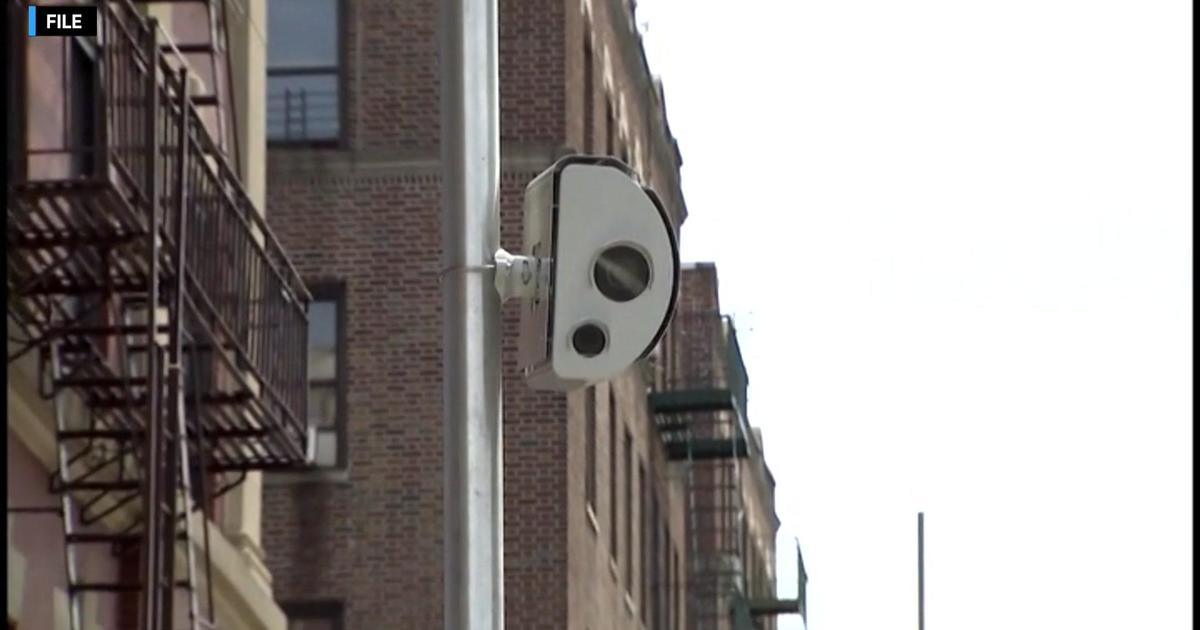Victims' Families Remember NYC Plane Crash From '60
NEW YORK (AP) -- Fifty years ago, two commercial airliners collided one mile above New York City, raining down destruction on a busy Brooklyn neighborhood. Victims' remains bloodied the snow after one jet hit the street at 200 mph, killing everyone aboard and six people on the ground.
The Dec. 16, 1960, crash of a United jet and a TWA propeller plane was the worst aviation disaster to date, killing 134 people, including 128 people on both planes. In its wake it left a legacy of improved air safety; it was first crash in which investigators made extensive use of so-called black boxes and it spurred a revamping of the air traffic control system to prevent future tragedies.
Photos of the crash show the broken United Air Lines DC-8 resting on Seventh Avenue, the main commercial strip of Brooklyn's Park Slope neighborhood. At least 10 buildings were destroyed including a funeral home, a laundry and the Pillar of Fire Church. The dead included a garbage collector and two men selling Christmas trees.
Hopes were raised in Brooklyn when a young passenger was found alive, then dashed when he died.
"What was in many of our hearts was that God let him survive that horrible fall," said Eileen Bonner, a nursing supervisor at the hospital where 11-year-old Stephen Baltz was treated. "It just seemed like God wanted him to live. And then he didn't."
The other plane, a TWA Constellation, crashed into a military air base on Staten Island.
The United flight was en route from Chicago to the airport that is now JFK; the TWA flight was en route from Dayton and Columbus, Ohio, to LaGuardia.
Thirty-seven-year-old Paul Dotzenroth, of Wayzata, Minn., was on the United flight. His wife, Gloria, learned of the crash from TV.
"They announced the flight number and I knew he was on that flight because I'd talked to his secretary," said Gloria Dotzenroth, now 85. "You just don't believe what you're seeing."
Gloria Dotzenroth said her husband, president of an engineering firm, "was a very innovative and inventive engineer" who developed products for the packaging industry. The couple had met in college and had three small children; she never remarried.
George M. Walsh was in first grade at a private school near the Brooklyn crash scene. He "felt a thump, more of a concussion than sharp noise or explosion," recalled Walsh, now an Associated Press newsman in Albany, N.Y.
The children were escorted to the gym, and Walsh's mother picked Walsh and his sister up after a "panicky" drive from Flatbush.
It was Stephen Baltz, a few years older than Walsh, who captured the nation's attention.
Stephen, from Wilmette, Ill., was found alive but badly burned in a snowbank and rushed to nearby Methodist Hospital.
Bonner, then Methodist's director of nursing service, remembers that doctors and nurses rushed to the crash site hoping to treat survivors, but everyone was dead -- except Stephen.
"We put Stephen on an empty floor in the maternity building," said Bonner, who is 82 and still lives in Brooklyn. "He was the nicest, nicest child you'd ever want to meet. Just as sweet as he could be."
Stephen's parents arrived separately and were whisked through side doors to their son's bedside because the hospital "was crawling with reporters."
But Stephen could not survive his injuries, including severe smoke inhalation. He died the next morning.
His father, William, an Admiral Corp. vice president, told reporters: "We thought he would have been a tremendous and outstanding man, but we were not privileged to see him grow into manhood."
Stephen's parents have died, but his brother William Baltz and sister Randee Kadziel keep his memory alive.
Kadziel, who is 59 and a schoolteacher in Park City, Utah, said Stephen loved to play outdoors on a rope swing and build model airplanes. He and a friend started a business raising hamsters, though Kadziel guesses they mainly gave the animals away rather than selling them.
Kadziel was with her mother when they learned that Stephen had survived a plane crash. "I didn't see the extent of his burns," she said. "I was not allowed to go in there."
She suffered for years after Stephen's death. "My mother was the strong one and would find me in the closet crying," she said.
As he left the hospital, the father put a handful of dimes and nickels from Stephen's pocket into a donation box. The coins are affixed to a plaque in the chapel of what is now New York Methodist Hospital. "Our Tribute to a Brave Little Boy," it reads.
There is no memorial at the crash scene 13 blocks to the north. The 50 years since the disaster have seen Park Slope transformed from a blue-collar neighborhood to the prototypical yuppie enclave. A vacant lot at the crash scene was replaced in 2007 by a five-story condo building.
All bodies were recovered, but some unidentified remains are buried at a gravesite at Brooklyn's historic Green-Wood Cemetery -- the final resting place of abolitionist Henry Ward Beecher, conductor Leonard Bernstein and mobster Joey Gallo. The cemetery will unveil an 8-foot granite monument commemorating the crash victims on Thursday, the anniversary of the collision.
If the 1960 crash has been erased from the physical landscape, its place in aviation history is secure.
The collision was the first air disaster in which flight recorders -- the planes' so-called black boxes -- provided extensive details for investigators.
Air traffic controllers had instructed the DC-8 to enter an oval-shaped holding pattern upon reaching a certain point -- near New York. Instead the DC-8 flew 11 miles past the holding point, possibly because one of its navigational radios was not working, and crashed into the Constellation as the other airplane was lining up to land at LaGuardia.
Following the crash, the Federal Aviation Agency -- later renamed the Federal Aviation Administration -- instituted new rules to prevent the recurrence of such a tragedy.
One new regulation required that pilots operating under instrument flight rules report all malfunctions of navigation or communication equipment. Another set a 250-knot speed limit near airports. The United plane was traveling at 301 knots.
In the longer term, the FAA said in a news release marking the crash anniversary, the collision spurred the agency to modernize the air traffic control system through a task force that reported to President Kennedy.
"It's a shame that disaster is what sparks progress, but that's what happens," said Marc S. Moller, a lawyer who has spent his career litigating plane crashes. "Disaster becomes the catalyst for improvements."



